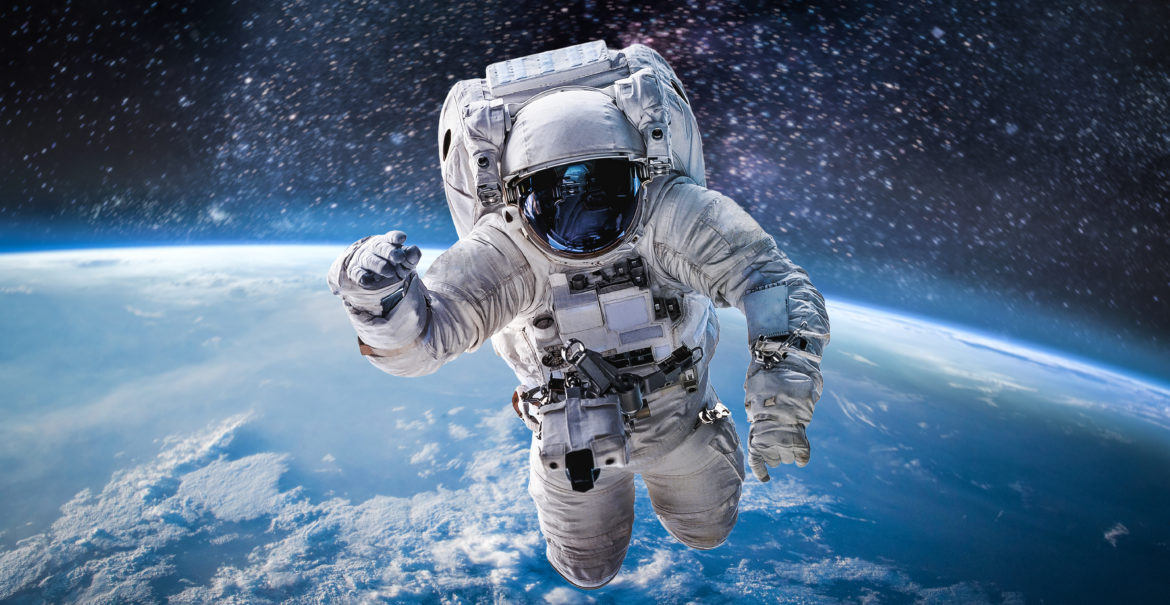
Tawnya Plummer Laughinghouse is Manager of the Technology Demonstration Missions (TDM) Program Office at NASA Marshall Space Flight Center (MSFC) in Huntsville, AL.
Here is what Tawnya had to say when we asked her about navigating a career in STEM:
GenHERation®: What did your professional path look like before you ended up in your current role?
Tawnya Plummer Laughinghouse: I participated in NASA SHARP (Summer High School Apprenticeship Research Program) as a high school student—a six-week summer intern program. The first project I worked on was optical data processing techniques (working with lasers). What’s so ironic is that one of the technology demonstrations that my program launched to space in December 2021 was called Laser Communication Relay Demonstration (LCRD) and it revolutionized the way that we send data back and forth from space to earth. Kind of a full circle moment. Through NASA SHARP, I learned about the NASA WISE (Women In Science and Engineering) program, which was a partnership between NASA and Spelman College. I applied for it and received a full scholarship to do a dual degree (3+2) program at Spelman College and Georgia Tech. At the end of the program, I received a BS degree from each school (Chemistry and Chemical Engineering, respectively). Post-graduation, I worked in the manufacturing industry as a product engineer and as a process chemist. After several years in industry, I headed “back home” to NASA and began my professional career at Marshall Space Flight Center in 2004.
GenHERation®: What skill do you utilize the most on a daily basis?
Plummer Laughinghouse: As Program Manager, I manage an office of 25 people. I am constantly receiving information from our mission managers, integration leads, and business managers. With this influx of information, it is very critical that my listening, processing, and decision-making skills are on point.
GenHERation®: What has been the most exciting project you have worked on at NASA?
Plummer Laughinghouse: There have been so many, but I’d have to say two of our TDM technologies called TRN and MOXIE—both of which launched in July 2020 as part of the MARS Perseverance Rover Mission. The Rover arrived just over 6.5 months later on the surface of Mars in February 2021. TRN, or Terrain Relative Navigation, is an on-board landing system that actually enabled the Rover to make the most precise landing ever on the hazardous surface of Mars by mapping out the safest and smoothest place to land amid the very rocky terrain. MOXIE, which stands for Mars Oxygen In-situ resource utilization Experiment, is demonstrating the first ever production of breathable oxygen from the carbon dioxide-rich Mars atmosphere. This oxygen production will be necessary to sustain human exploration of Mars in the decades to come. These technologies helped make possible the incredibly ground-breaking feats of the Mars Rover mission, and I’ll be forever grateful contributing to the NASA, industry, and academia partnerships that helped make this mission a reality.
GenHERation®: What are three ways you can be effective at brainstorming?
Plummer Laughinghouse: There are a lot of ways that you can brainstorm. You can use post-it notes, embrace a design thinking mindset, and so on. However, there are three elements you must have to make brainstorming effective. First, effective brainstorming doesn’t happen in a vacuum. If you’re looking for new ideas and solutions, surround yourself with a great team that has diverse skills and talents. Second, assemble a team that works well together. It should be an unspoken rule that challenging an idea is fair game. Third, you have to be a leader that creates an environment that allows the first two ideals to happen. You have to be that agent who is creating that environment for innovative thought.
GenHERation®: How can you show that you are an innovative thinker on your resume and during an interview?
Plummer Laughinghouse: You have to get out there and have experiences—it can be from school, an activity, or a club. Then, it’s all about value. More specifically, demonstrating your value to others. For example, when you list an internship on your resume, don’t just list what your roles and responsibilities were at the organization. Instead, explain how you added value. Did you solve a problem? Save the company money? Generate revenue? Streamline processes? You should also articulate this during interviews.
GenHERation®: What are the most important hard and soft skills needed to succeed in the tech industry?
Plummer Laughinghouse: Start with the hard skills. You need technical and analytical skills. A STEM education provides you with the tools for how to analyze and how to think. My chemical engineering classmates at Georgia Tech pursued a variety of paths, including law school, business, and medical school (in addition to traditional chemical engineering careers) because they had a great foundational skill set from the degree. In terms of soft skills, you have to be good at networking, building relationships, and negotiating. You should also be able to lead with a servant heart and conviction, be authentic, and empower your team to think innovatively.
GenHERation®: How can you get your foot in the door at NASA?
Plummer Laughinghouse: Check out NASA internships! Relationship building and networking are an important part of the process, and everyone knows someone who can help you. I take my friends’ young kids to work with me to show them about my job and try to plant a seed early.
GenHERation®: What is the best piece of advice you have been given throughout your career journey?
Plummer Laughinghouse: “Do it afraid.” For many of the career opportunities that cross my path, I don’t necessarily feel “ready” at the outset. Yet, I know that with determination and commitment to do the work, and having key mentors in my corner, success is highly probable. My goal has always been to knock every opportunity and role I take on “out the park.” Then, your performance will undoubtedly open doors for the next Tawnya or the next person like you!
Tawnya Plummer Laughinghouse is Manager of the Technology Demonstration Missions (TDM) Program Office at NASA Marshall Space Flight Center (MSFC) in Huntsville, AL. TDM is the largest program in NASA’s Space Technology Mission Directorate, with an annual budget approaching $500M. In the 3 years that Tawnya has served as manager for TDM, the program has launched 6 technologies to space: Robotic Refueling Mission 3, Deep Space Atomic Clock, Green Propellant Infusion Mission, Terrain Relative Navigation, Mars Oxygen ISRU Experiment, and most recently, Laser Communications Relay Demonstration on December 7, 2021. Prior to joining the TDM Program in 2017, Tawnya spent over 12 years as a Materials Engineer with the NASA MSFC Materials and Processes Laboratory. Before joining NASA in 2004, she worked as a process chemist and product engineer in the manufacturing industry. A recipient of the NASA Women in Science and Engineering (WISE) scholarship, Tawnya earned a B.S. Degree in Chemistry with honors from Spelman College, and a B.S. in Chemical Engineering from Georgia Tech. Tawnya also holds a Master of Science in Management from the University of Alabama in Huntsville. Tawnya is a graduate of various early-career and mid-level leadership development programs at NASA and the US Army Aviation and Missile Command. She is married with 2 amazing children.



Comments (0)